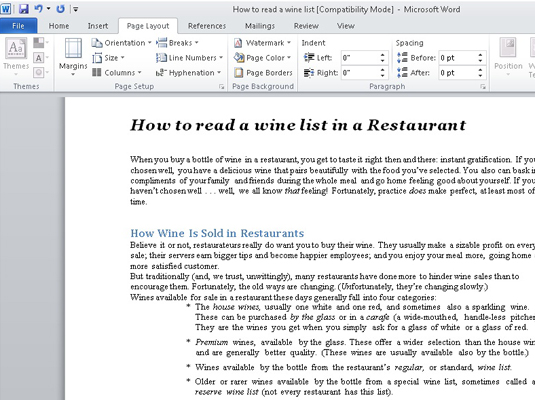

If you set the font size at 12 points and apply single spacing, the true height of your lines of text will be roughly 115% to 120% of the point size, or 13.8 to 14.4 points. For example, let’s say you select Times New Roman, a font that is common in legal documents. Typically, single-spaced lines range from 110% to 135% of the font size. The amount of leading varies depending on which font you are using (not all 12-point fonts are equal). In order to improve readability, single and double spacing add a certain amount of vertical distance - in the form of white space - between lines of text, an aspect of typography known as “leading” (pronounced as if it were spelled “ledding”). However, that formulation leaves out one crucial factor.

(As a reminder, there are 72 points to an inch thus, 12 points is 1/6 of an inch and 24 points is 1/3 of an inch.) If that were so, single-spacing with any 12-point font would produce lines of text that are 12 points in height and double-spacing would produce lines of text that are 24 points in height. Many people probably assume that the “simple” line-spacing options - single and double spacing - merely reflect multiples of the point size of the font they are using. The Role of “Leading” in Single and Double Spacing Before exploring the other choices, it’s worth discussing single and double spacing, which are not - contrary to what you might think - entirely self-explanatory. Line spacing options in Word include conventional single and double spacing, plus a few additional choices. Line spacing affects the distance between lines of text within a paragraph, and paragraph spacing affects the distance (i.e., the white space) between paragraphs. Both are attributes of paragraph formatting that can be configured via the Paragraph dialog, but they work differently. In Word, there are two types of spacing: line spacing and paragraph spacing. Figure 7.Understanding line and paragraph spacing in Word Your new line spacing should appear immediately. (Optional Step) Select the arrow in the Paragraph Spacing After menu and choose a new number from the drop-down menu to add or reduce space after individual paragraphs.Īlternatively, you can enter a specific number into the Paragraph Spacing After menu.The numbers are based on the size of your current font.Īlternatively, you can enter a specific number into the Line Spacing menu. Select the arrow in the Line Spacing menu in the Format pane and choose a new number from the drop-down menu.Select the text within a single text box.See the Pro Tip below if your text boxes overlap after adjusting the line spacing. If your text disappears, copy the excess text into text boxes on additional pages before adjusting the line spacing. If the text expands beyond the page, it will disappear. The following steps are for adjusting line spacing within a text box on a single page.


 0 kommentar(er)
0 kommentar(er)
